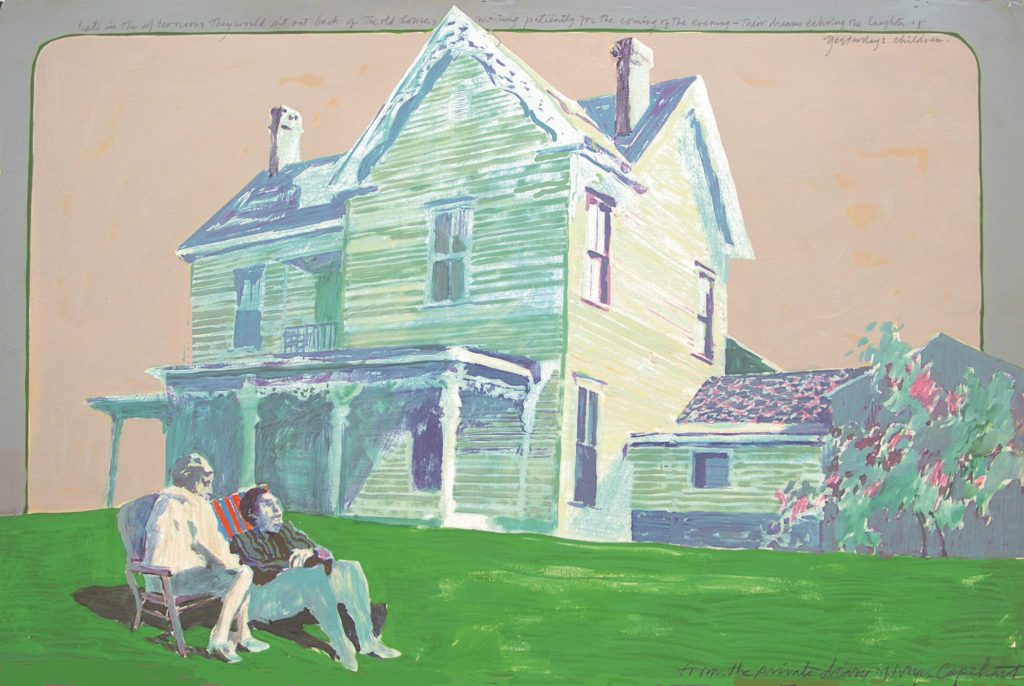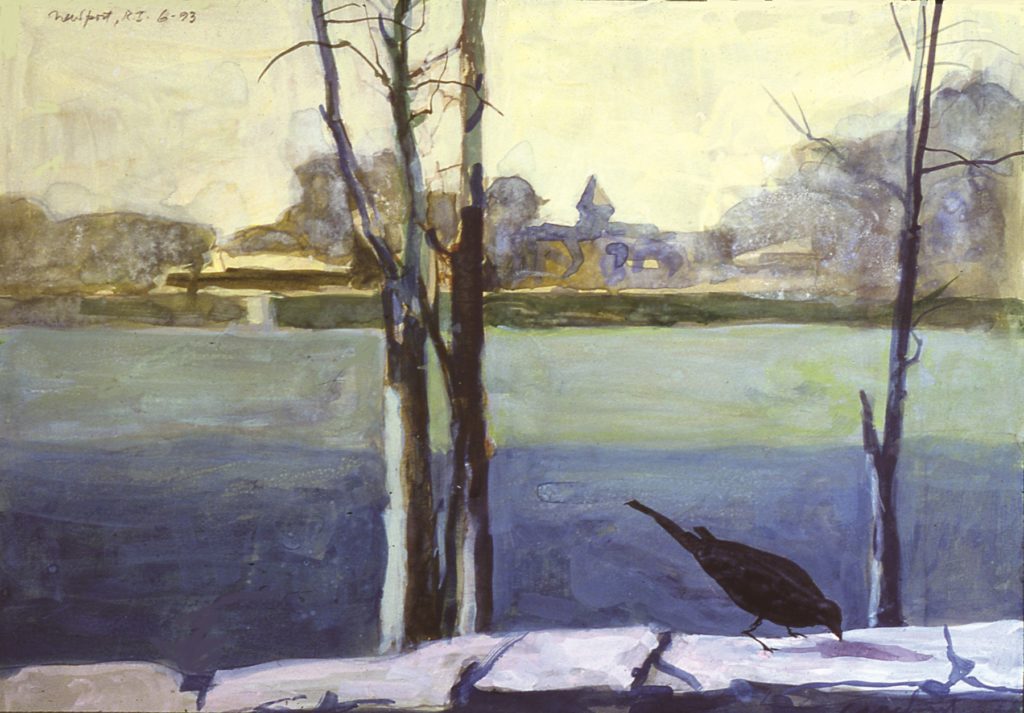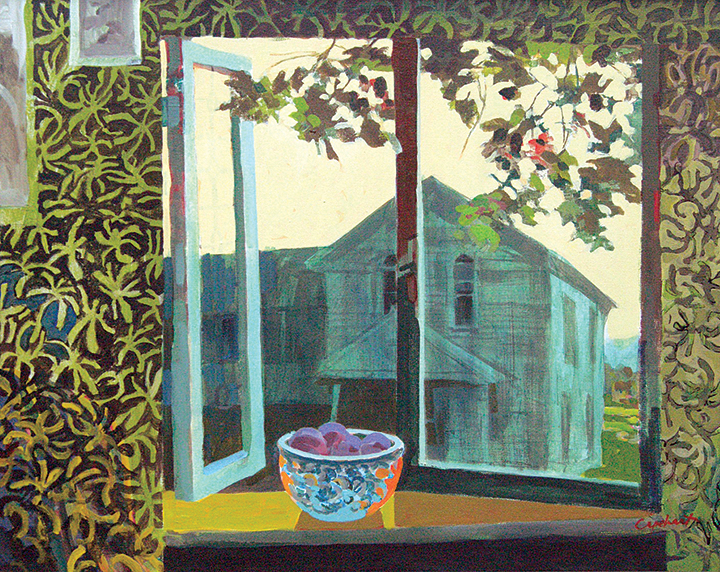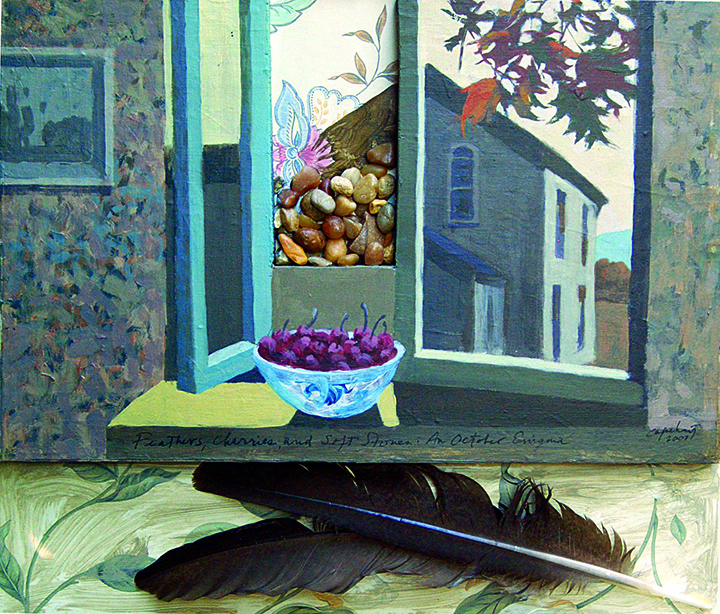
“Late in the afternoon they would sit out back of the old house, waiting patiently for the coming of evening and the laughter of yesterday’s children.”
-From the Private Diary of Noyes Capehart
One of the most familiar features of art and music is that of variations, either variations on the works by other artists or musicians, or variations of one’s own creations. In music, for example, Beethoven wrote several variations of the final movement to his third symphony, the Eroica. Brahms followed with Variations and Fugue on a Theme by Handel. In art, Leonardo da Vinci executed three large versions of his Madonna of the Rocks. Vincent van Gogh is well known for his painting of Starry Night, but probably less well known is the fact that he painted over 18 versions of the theme. Picasso painted dozens of variations on Delacroix’s Women of Algiers. The making of artistic variations is one of the principle ways we (1) develop our own craft by studying the works of other artists, and (2) find the best solution for a given picture idea.
In 1993, while directing an academic program for Appalachian State University in Newport, Rhode Island, I passed an open field surrounded by a long rock wall. Atop the wall was a black crow. When I returned to my quarters, I executed a small watercolor (Image 3). Four years later, I returned to the rock wall and open field and painted Floaters (image 4). In Floaters, I “borrowed” the image of a red fishing boat from one of van Gogh’s paintings. A point I would like to make here: had the small watercolor of the crow on the wall not been made, it is highly doubtful Floaters would have ever been born.


..
“The floaters started arriving by mid-morning, eager to see Vincent’s colorful boat. I watched from the other side of the wall, equally excited by the stunning spectacle.” -From the Private Diary of Noyes Capehart
My first painting addressing the theme of an open widow came in 1993 with Plums (image 1). Nearly ten years later, a good friend of mine commissioned me to do a painting of his wife, Jill (image 2). He had seen Plums, and wanted me to do something that had a similar “look.” He added that he wanted the painting to reference her cherished mountains.


..
Intrigued with the idea of varying the imagery seen through an open window, I painted another variation in 2007, A Bowl of Cherries. In October Enigma, I incorporated two feathers and several small rocks. I consider this work to be more of a construction than a conventional painting. My most recent visit to the window theme came in December of 2018 with Winter Plums . The image of the building seen through the window came from Defiant Warrior, a work from 2004 based on an abandoned schoolhouse not far from my home in Boone, North Carolina.



No two artists think or paint in exactly the same way. My approach as a maker of visual images stems from the belief that the best pictures and stories are “found,” not pre-determined. In my world – which embraces writing and painting – there are architects and there are hunters. The architect pre-determines an outcome, while my hunter picks up the “scent” of a picture or story idea and pursues it until it is captured. One approach is no better than the other, but for me the hunter best reflects my instincts and priorities. Perhaps that’s why I’m so drawn to variations; each picture reveals an unexpected option. If I make five variations of a given picture idea and position them along the wall, you can rest assured I’ll find myself returning to one of the five options as the one I favor the most. That’s what makes picture-making so much fun for me. But not all artists work or think this way, and that’s probably a good thing.


You could certainly see your enthusiasm in the work you write. The world hopes for even more passionate writers like you who are not afraid to say how they believe. Always go after your heart.